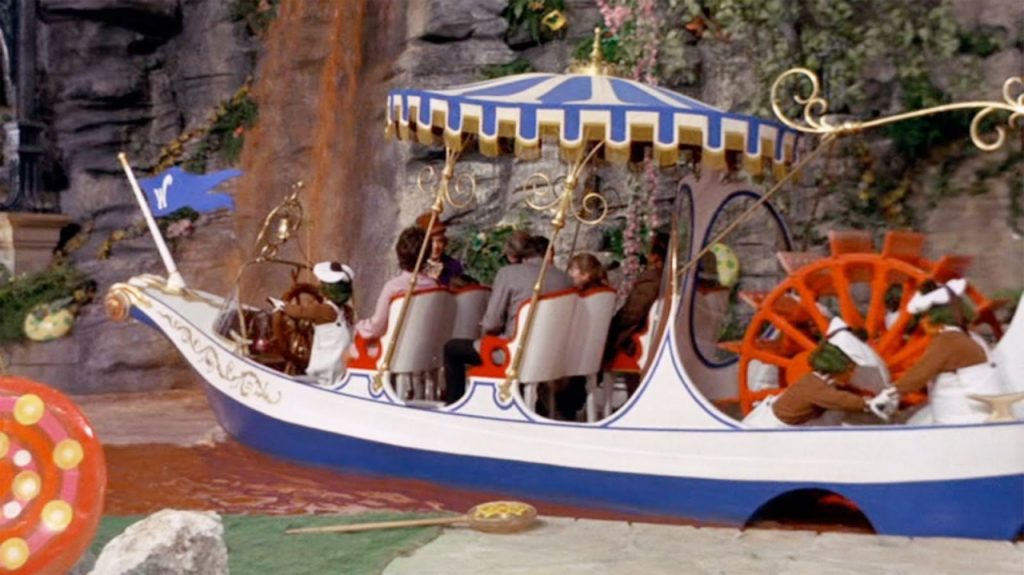

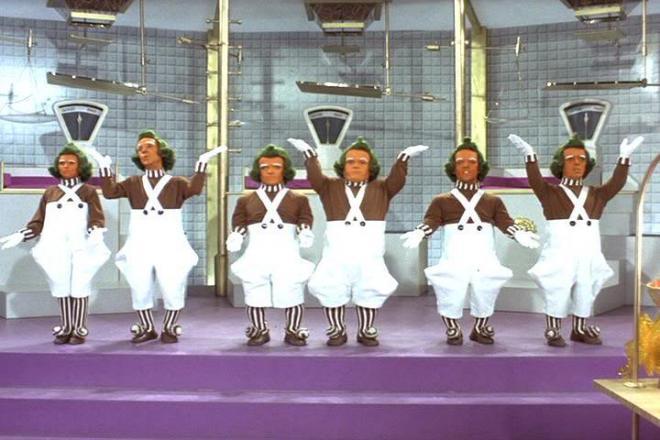
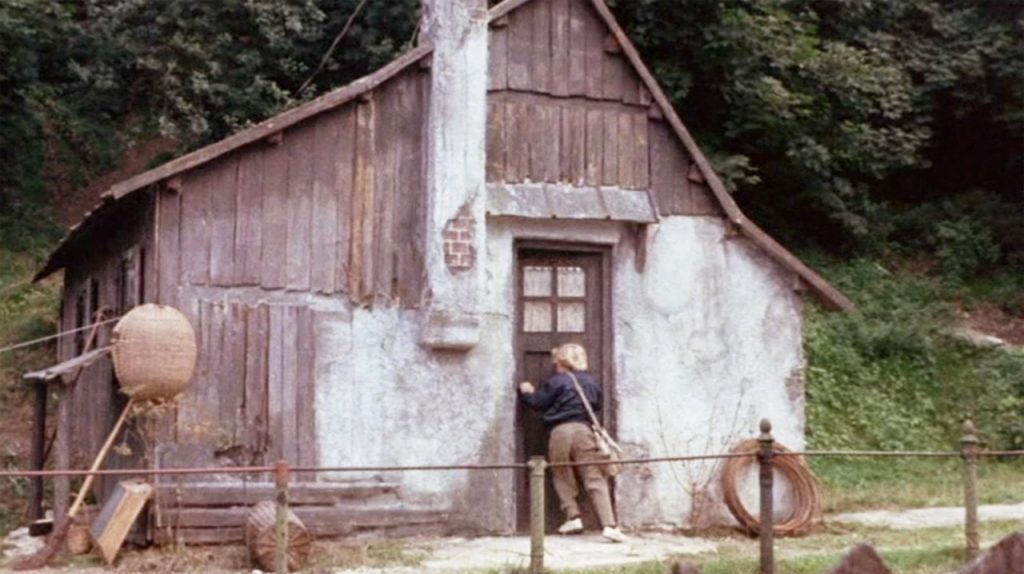
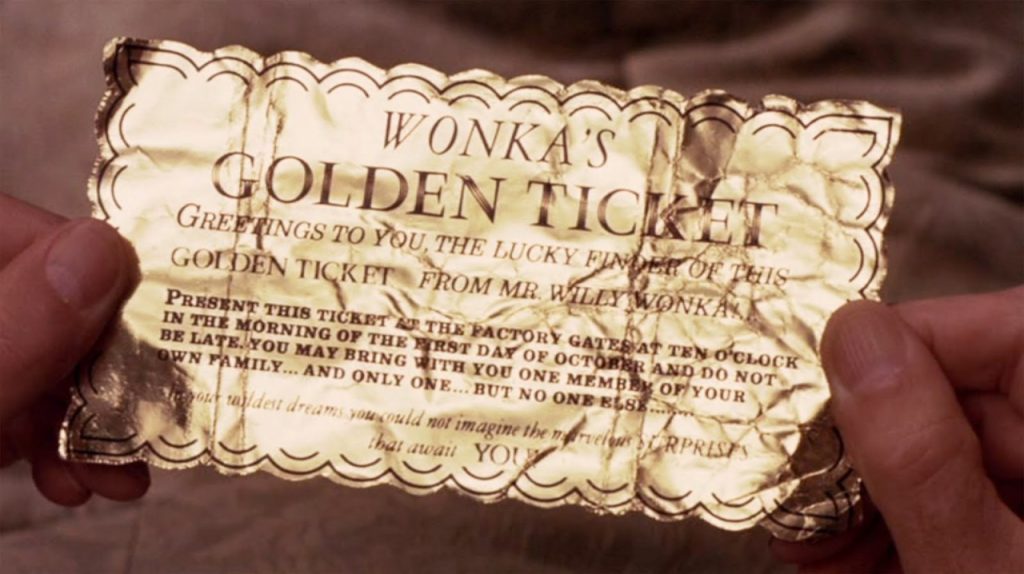
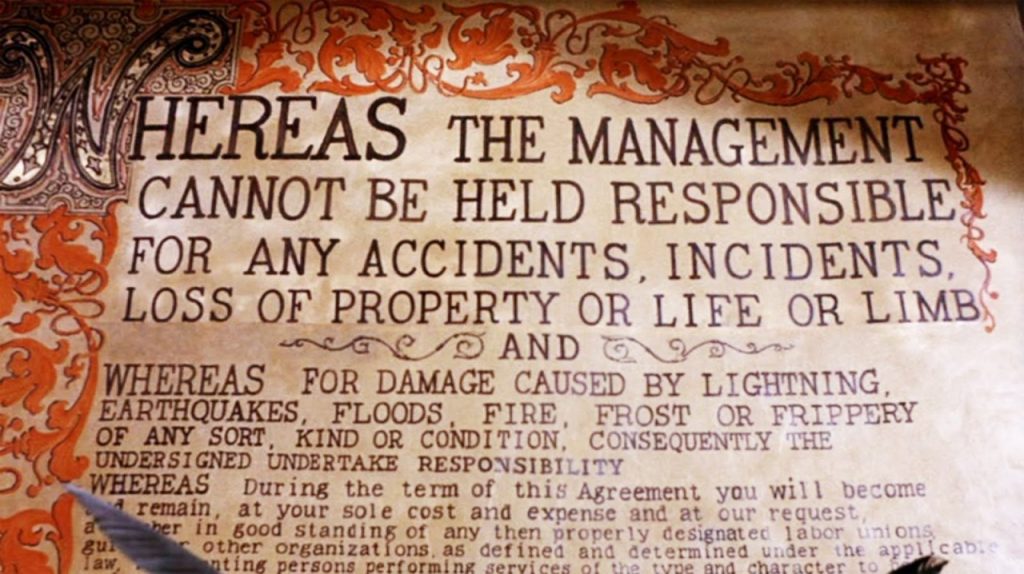
The film, to an extent greater than even Dahl’s book, evokes the terrifyingly dark sensibilities behind the whimsical manufactory and its mysterious owner. But here the nightmares of exploding children and dark chocolate depths replace the burdens of factory labor with the singing of Oompa-Loompas (who, in ultimate capitalist fantasy, are paid only in room and board and cacao beans). Conveyors and machines are exchanged for paradisiacal gardens of earthly delights grown from pure imagination.
The extent of the rather unconventional logistical apparatus employed in Wonka’s chocolate production extends even to the golden ticket that sets the story in motion, freeing poor Charlie from a life so meagre that his grandparents remain confined to a single bed. But nothing in the tale is more haunting than the horrific and wonderful boat ride that carries the visitors, and the viewer, to the darker depths of Wonka’s world.
In his introductory essay for Paul Virilio’s Speed & Politics Benjamin Bratton writes:
Modernity is a world in motion, expressed in translations of strategic space into logistical time, and back again. It is a history of cities, partitions, trading circuits, satellites, and software; of a political landscape governed by competing technologies of surveillance, mobilization, fortification and their interdependent administrations. It begins as an archaeology of naval routes, strategic techniques and urban distributions, and becomes an integrated world of events reduced to shapes and symbols, viewed and manipulated instantaneously on screens.
Logistics of Habitable Circulation..
And so to coincide with the launch of our new podcast, Logistics of Perception, it is to this image that we turn. The archaeology of a minor naval route, the perfect smoothness between the demands of fascination and the supply of fantasy.


